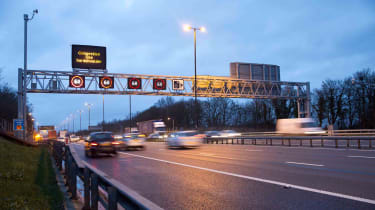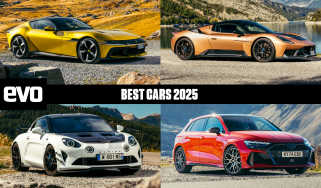Smart motorways explained – speed cameras, hard shoulders and more
Despite good intentions, new data suggests smart motorways aren’t quite as safe as they should be. We dive into the details

Though they’re designed to make driving a safer, quicker and more enjoyable affair, smart motorways have become a bugbear for drivers around the country. Our sister title Auto Express gathered the latest details, explaining variable speed limits, hard shoulder use and how to stay safe.
Coming to fruition as a way to increase road capacity without the exorbitant expense of paving new roads, the UK saw its first smart motorway with All Lane Running in 2006, on the M42 in the West Midlands. Portions of the M25 around London, M6 in Birmingham, M62 in Manchester, the M1 from London to Luton and further north all now have the technology available.
Variable speed limit grace period
Controversy has surrounded smart motorways since their introduction, stemming primarily from both the removal of a permanent hard shoulder, and the use of variable speed limits. Dictated by overhead dot matrix signs, the system is designed to control traffic flow, reducing the frequency of jams in the process.
Despite what some may believe, a freedom of information request by Auto Express found that there’s a one minute grace period between the signs displaying a new limit, and the speed cameras altering their settings, meaning drivers should have sufficient time to adjust to the new limit, avoiding unwanted fines and preventing sudden changes in speed.
> Mandatory speed limiters to be fitted to all new UK cars after 2022
Hard shoulders
Perhaps the biggest sticking point for most is the use of ALR, a system that allows the hard shoulder to be used as a live lane in a bid to increase road capacity and control traffic flow. Though cars are more reliable than ever, breakdowns are inevitable, and with no hard shoulder to pull onto, it’s believed that this makes the roads more dangerous than before.
Stopped Vehicle Detection is capable of spotting broken-down vehicles and closing lanes within minutes, but the technology is rarely used in the UK, with Highways England taking 17 minutes on average to manually spot hazards through CCTV – it takes a further three minutes to change the signal for the obstructed lane to a red ‘X’.
Beyond this, there’s the issue of drivers ignoring the red X’ and continuing to drive in a closed lane; 180,000 warnings were sent to drivers who committed the offence between 2017 and summer 2018.
What to do if you break down on a smart motorway
Refuge areas are spaced up to every two miles along smart motorways, so if you’re able to safely access one, these are the first port of call. Recovery firms such as the AA, RAC and Green Flag will not recover vehicles from live lanes, but will assist should you be situated in a refuge area – these are painted yellow and marked with blue signs featuring an orange SOS telephone symbol.
Should your vehicle operate, but you’re unable to access a refuge area, move to the hard shoulder (where provided) or as close to the nearside verge or other nearside boundary as possible. Switch hazard warning lights on throughout the process, exit the car through the nearside door, and stand on the far side of the safety barrier away from moving traffic.


